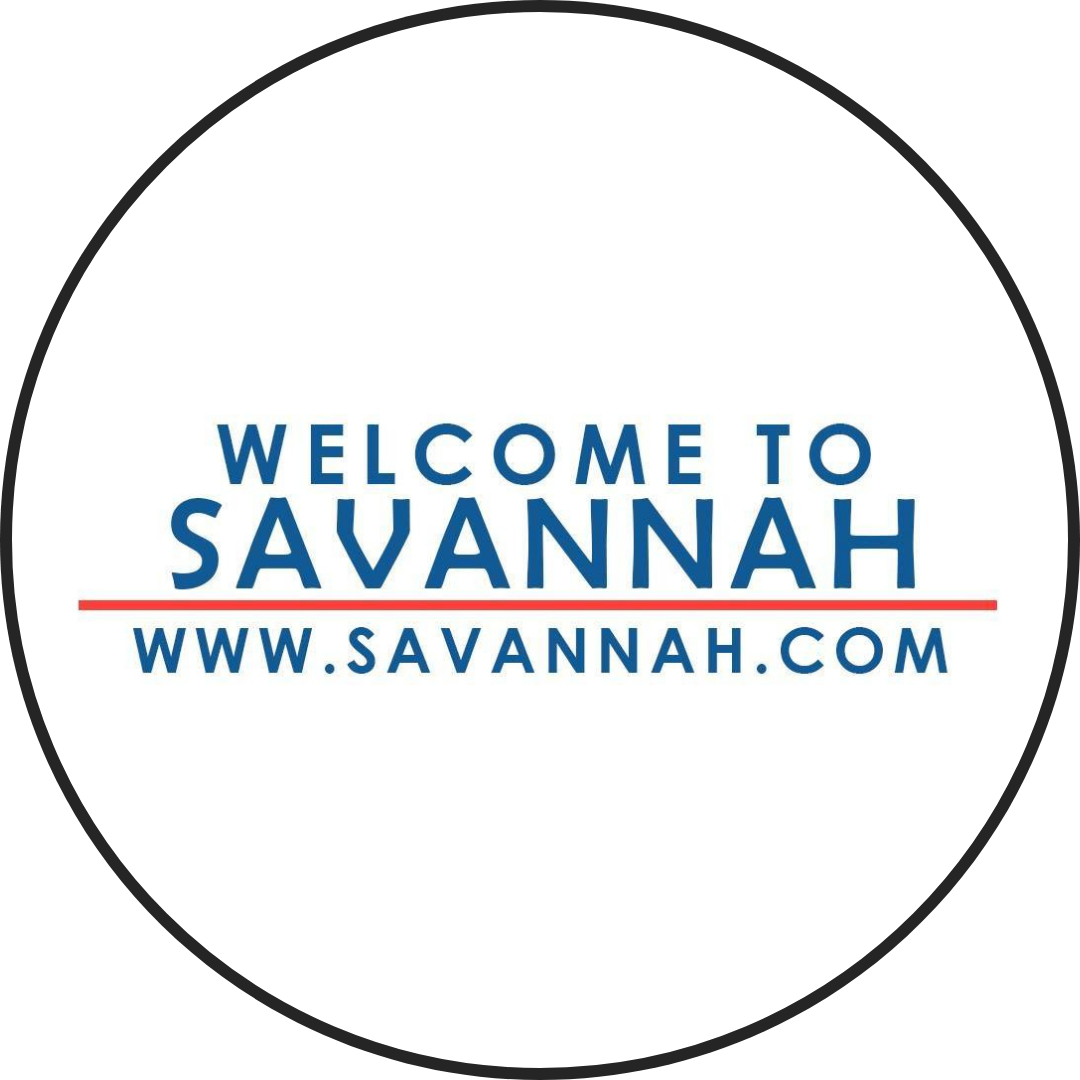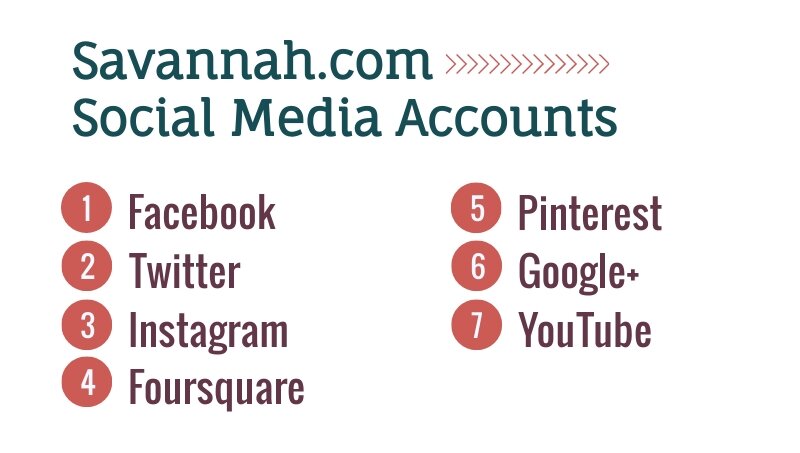Crafting a fresh social strategy
for the Hostess City of the South

Island Communications is a small company based in Bluffton, South Carolina, that publishes print and digital travel resources for tourism hotspots in the Lowcountry. When I initially joined their team as a social media manager in 2017, their social presence was disjointed, lacked consistent branding, and had been managed without a clear strategy for several years.
I was already developing a content strategy and analyzing performance data when, in 2019, the company was gearing up for a major overhaul of all their brand websites. Once the new look for Savannah.com launched in May 2019, I brought the new visual branding into Savannah’s social media channels. And when I was preparing to leave the company later in 2019, I synthesized two and a half years of proven success into a content strategy guide for Island Communications to continue using after my departure.
Client
Island Communications
Brand
Savannah.com
Timeline
May 2017 - Oct. 2019
Challenge
Savannah.com had too many social media accounts, including some that were no longer in use. The branding on each platform was inconsistent, and the content strategy was nonexistent. Most of their accounts were linked to autopopulate with posts from other channels, which created redundant messaging without consideration for the individual experience of each platform.
They needed to pare down their presence and have a content strategy for inspiring social media users to click through to the websites. The strategy needed to turn first-time visitors into loyal followers while still appealing to lifelong fans. It also needed to be flexible enough to account for future changes in how people use online social platforms.
Result
After reducing Island Communications’ social presence to only what they needed, I developed a content strategy for success based on performance analytics. I condensed the strategy into an all-in-one guide that covered how to maintain consistent branding, as well as instructions on how to replicate the results I achieved while leaving room for growth as needs change.
Process
1. Getting Organized with a Social Media Audit
Before any strategy planning could be done, we needed to get their social media presence back in hand. Part of my onboarding process involved gaining access to all of Island Communications’ different social media accounts. The first opportunity for improvements revealed itself right away: account details weren’t stored in a single location. Instead, they were spread across printed documents, email accounts, and post-it notes. For some accounts, the only record of their existence was in the app permissions of individual platforms.
Once I had tracked down all 7 of Savannah.com’s varying social media accounts and retrieved their login information, I sorted them into three categories: necessary platforms, beneficial platforms, and irrelevant platforms. I presented an outline of the pros and cons of each platform to the company owner, detailing the amount of time and effort each one required, as well as what demographics were active on each.
While Savannah.com was my first priority, my audit included all 5 of Island Communications’ brands. In total, they owned about 20 social media accounts. Their social media “team” was only ever one person, either a dedicated social media specialist or one of their other staff members. I presented two lists of accounts I recommended keeping: an essentials-only list that could be managed by one person, and a slightly expanded list that required a minimum of two people. Island Communications chose the first option.
As a result of my audit, we eliminated the following accounts:
Google+ had been fading in popularity long before it was officially declared dead six months after I deleted Savannah.com’s account.
Pinterest reached a very narrow demographic of users and seldom resulted in clicks to the website. Fewer of those conversions resulted in clicking on or booking with an advertiser. At the time, it was more prudent to devote their resources to their most successful platforms rather than overextend themselves.
FourSquare had long since fallen out of popular use. Island Communications didn’t even have the login information for this account anymore; I eventually gained access and was able to close the account for good.
YouTube occasionally served a purpose for the company, but they didn’t have enough video content to justify three different accounts. As the Hilton Head YouTube account served as their default place to upload videos, we eliminated the extra accounts.
2. A Consistent Visual Brand Identity
After narrowing down Savannah.com’s presence to the big three platforms (Facebook, Twitter, and Instagram), I combined their different “about” texts and new copy I wrote for the website into one script and adapted it to different lengths for each platform. The exact wording varied, but the narrative and tone remained consistent. Users could now visit Savannah.com on different social channels without a shred of uncertainty as to how they related to one another.
For Twitter and Instagram, I worked branded hashtags into the bio sections to increase their prominence and encourage others to use them.
3. New Visual Assets Built From Scratch
As I worked to update the social media channels, Savannah.com’s website underwent a complete redesign. I designed a text-based logo to serve as social media profile images that matched the new site design. The new logo text served as a template for other branded graphics I created for social media posts.
The image on the right is the logo from Savannah.com. The main colors of the new website design were red, white, and blue, so I copied the color palette into my icon designs and came up with a few variations for the company owner to choose between. Putting the site address in the icon responded to three of the brand’s needs:
Using the Savannah.com brand name as a logo instead of a welcome message that could come from any brand
To better distinguish Savannah.com from its main competitors, The Savannah Area Chamber of Commerce and Visit Savannah
To provide a direct call to action within the logo
The logo with blue text and a red line received the most positive feedback from Island Communications staff. Since the creation of Savannah.com’s Facebook account in 2011, this was the 18th profile image they had used. It was only the second to ever include the business logo. The previous logo-profile image, created in 2014, received 10 likes over the course of its use. Within the first week of uploading the new logo in 2019 (to coincide with the launch of the new website design), it received nearly 30 likes from followers.
In addition, I worked with an external videographer to come up with an original video to serve as both an advertisement for Savannah.com and the header video for Savannah.com’s Facebook profile. I served as a producer and director of the video project. The final product impressed the company owner so much, the videographer was hired again to create another original video for the HiltonHeadIsland.com brand.
4. Finding Success Through Trial, Error, and Analytics
Over the years of my employment with Island Communications, I experimented frequently with post content and scheduling on each platform. In addition to sharing links to content on Savannah.com, I took and edited original photos and videos, created custom graphics, and carefully curated shared content from advertisers and other brands/businesses of interest to Savannah.com’s audience.
To measure success, I compiled weekly analytics reports to share with the whole staff. The analytics consistently showed follower growth and engagement rates within or often above industry average. These reports also included screenshots of top-performing posts and any posts that promoted paying advertisers within Savannah Scene Magazine, which proved invaluable assets for the sales staff when negotiating ad contracts.
Rethinking Web Content with Social Media Readers in Mind
During the audit stage, we compared results from Google Analytics and each platform’s individual analytic tracking tools. Unsurprisingly, these numbers showed the majority of people going to Savannah.com from social media links were using mobile devices. The social media content was already built with mobile users in mind, but the website wasn’t until the new design launched in 2019. After identifying the top 10 most popular pages on Savannah.com, I was assigned the task of making them more mobile-friendly. This included resizing and replacing images, shortening article subheadings, and optimizing web page copy around the keywords users were already using to find these pages.
5. Building a Custom Social Media Strategy Guide
Once a pattern emerged from the analytics reports, it had to be synthesized into an easy-to-understand guide. I created a master guide for all five of Island Communications’ Lowcountry brands: Savannah, Hilton Head Island, Bluffton, Beaufort, and St. Simons Island. While there is plenty of overlap in the audiences for all five, they nevertheless required different strategies.
The guide also served to outline the duties and responsibilities of future social media managers employed by Island Communications. Not only would it provide guidance to a new hire, but it would also assist in the hiring process by clarifying the necessary skills and experience required to fill the role.
A Strategy with Room to Grow
Due to the constantly evolving nature of social media, no strategy can be set in stone. I laid the framework for a strategy that could be adapted as platforms and needs change. With input from the company owner, I outlined common goals across all of Island Communications’ social media accounts: to share high-quality, on-brand content that promotes each brand as a reliable resource for travel and tourism information; and to drive online traffic to each brand’s corresponding websites.
Despite the complex research and analysis that went into creating the strategy guide, the most effective strategy was fairly simple. The guide I created outlined the minimum amount of content to post per week to cycle in new, branded content while allowing flexibility around curated content.
Sections of the strategy guide included:
Overview of best practices
Explanations and examples of appropriate curated content from third parties
Platform-specific caption guidelines for photos and videos
Community engagement guide for responding to messages, comments, and tags, including frequently asked questions
Recommendations on accounts and/or strategy elements that need routine reevaluation
Outline for consistent analytics reporting and evaluation




